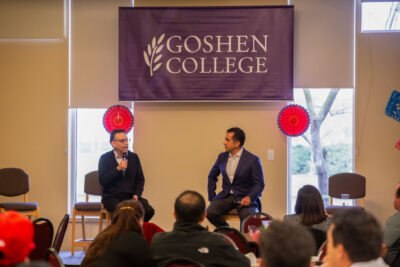The first three institutes at Goshen College—with potentially many more to come in the future—were launched at a faculty meeting this past Friday, March 25. These institutes will conduct research in ecological regeneration, Latino educational achievement and global Anabaptism.
Goshen College has begun these institutes to develop new academic programs and to conduct research that the institutes will then share with the community. President Jim Brenneman, who introduced the institutes to faculty on Friday, said that he hopes that designating them as “institutes” will raise their quality and profile. The three initial institutes were established this past week, but different departments may form other ones in the future.
Luke Gascho, director of Merry Lea Environmental Learning Center, introduced the Institute for Ecological Regeneration, which has been formulating ever since Merry Lea was founded 30 years ago. This institute seeks to bridge the gap between humans and their environment; it is committed to integrating land with environmental education with faith. As part of this institute, Gascho and his colleagues will host programs like the sustainability semester and symposia on ecological stewardship.
Rebecca Hernandez, director of the Center for Intercultural Teaching and Learning (CITL), is leading the Institute for Latino Educational Achievement. Hernandez and her coworkers will interview students about their experiences with interculturalism in the classroom at Goshen College and assess how well Latinos are being served in the campus community. As the Latino population in Goshen continues to grow, this institute will explore how they can recruit more Latinos to receive higher education. “This is really a formalization of our research,” said Hernandez. “We're putting a stake in the ground to say, 'this is where we go forward.'”
The Institute for the Study of Global Anabaptism is led by John D. Roth, professor of history. This institute seeks to examine how demographics are shifting in the world-wide Mennonite church. Today, there are 1.7 million Mennonites in the world who come from 83 different countries—groups within the denomination of whom North American Mennonites are often only vaguely aware. To give these new Mennonites a place to tell their stories, the institute is developing an online Global Anabaptist Wiki as well as surveying 12 Mennonite groups about their Mennonite identities. As Roth said at the meeting on Friday, “I hope that this will breath new life into a tradition that, like all traditions, is constantly in need of renewal.”
Now that they are established, these three institutes will partner with various students, faculty and organizations to continue conducting research that is more focused and intentional than it was before.

